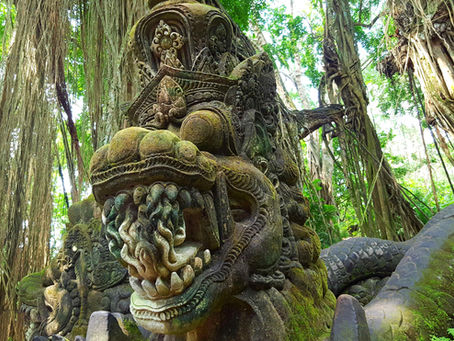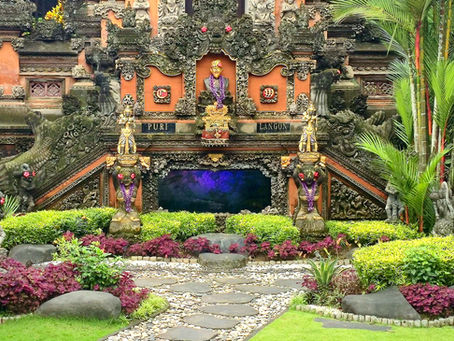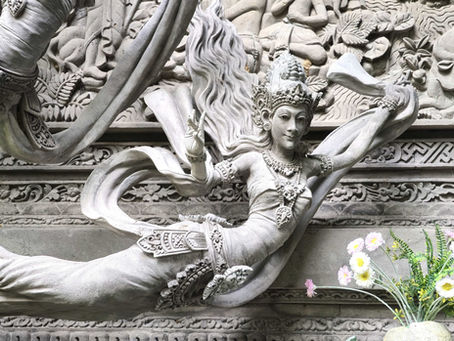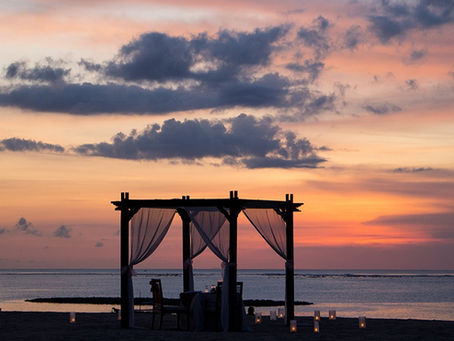top of page

GLOBAL SHANANIGANS

Search


Wat Chedi Luang
Commissioned under King Saen Muangma in the late 14th century, this ancient royal monastery stands among Chiang Mai’s most venerated temples. Originally envisioned as a monumental reliquary to honour and enshrine the ashes of his father, King Ku Na, it was to rise as a symbol of royal devotion and divine aspiration. Yet destiny had other plans.
Shannon


The Great Temple of Death
Agung Padangtegal Temple is one of the primary temples located within the Sacred Monkey Forest Sanctuary in Ubud, Bali. Established in the late 14th century, the temple serves as a key spiritual site for the local community, dedicated primarily to the worship of Hindu deities and various ancestral spirits. It is considered the main temple of the forest complex and plays a central role in religious ceremonies.
Shannon


The Sacred Nāgas of Bali - Guardians of the Island
In the mystical landscape of Bali, where volcanoes brood above emerald rice terraces and the sea whispers ancient secrets, serpentine beings known as Nāgas hold a revered place in the island’s cosmology. These mythical serpent deities, often depicted as long, dragon-like creatures adorned with golden crowns and shimmering scales of green and gold, are considered powerful protectors of water, fertility and the spiritual balance between the underworld, earth and the heavens.
Shannon


Sangeh Monkey Forest
Sprawled across 14 hectares of ancient forestland, Sangeh Monkey Forest, also known as Obyek Wisata Bukit Sari Sangeh, is one of Bali’s most enchanting natural sanctuaries. Towering nutmeg trees, some reaching over 40 metres tall, dominate the landscape, creating a high green canopy that diffuses the tropical light and hushes the sounds of the outside world. But what truly sets this forest apart is its origin story. According to legend, the trees were not planted, they walked
Shannon


The Rice Terraces of Tegallalang
Carved like emerald steps into Ubud’s natural amphitheatres, locals say the spirit of the rice goddess still watches over the iconic Tegallalang Rice Terrace, blessing the fields with life and balance. Also known as Ceking, the terraces are a large collection of beautiful verdant rice paddies, carved into the hillside by generations of farmers and shaped by centuries of Balinese ingenuity.
Shannon


Bali’s Buried Past - Blood on the Island of the Gods
One of the most horrific chapters in Balinese history occurred during the anti communist purges which swept across Indonesia in the mid 1960's and barely anyone dares talk about it. In the years leading up to the massacre, Bali was already a fractured island, mirroring the deepening political and social divisions across Indonesia.
Shannon


Kehen - The Temple of Fire
First mentioned in ancient copper inscriptions from the 9th century, Kehen Temple was originally known as Pura Hyang Api, a sacred site dedicated to Agni, the Hindu God of fire. This powerful deity symbolises not just destruction but also renewal and purification, embodying the transformative force of flame. Over the centuries, the temple underwent several name changes as it evolved with the shifting tides of Balinese history and spirituality.
Shannon


Pura Dalem Ubud - The Temple of Death
In the shadowed heart of Ubud stands Pura Dalem, a temple steeped in ancient power and shadowed secrets. One of the area’s most formidable sacred sites, it pulses at the centre of the local spiritual life, a place where worship, dark rituals and otherworldly performances unfold. Its moss clad stone carvings depict guardian spirits and fearsome deities, whispering of life, death and the unseen forces that linger at the edge of perception.
Shannon


Gunung Kawi Tampaksiring - The Mountain of Lost Kings
Carved into the rock cliffs on both sides of the Pakrisan River, this 11th century temple site and funerary complex is of profound historical and spiritual significance to the Balinese people. The name Gunung Kawi translates to the "Mountain of Poetry" but it is also affectionately referred to as the Valley of the Kings.
Shannon


Besakih Temple
The origins of Pura Besakih are veiled in ancient legend, its story whispered through centuries beyond recorded memory. For more than a thousand years, this sprawling temple complex has stood as the spiritual heart and the “Mother Temple” of the whole island. Perched nearly a kilometre above the sea, on the jagged southwestern flank of Mount Agung, it commands a breathtaking view and an air of sacred power.
Shannon


Gunung Lebah - The Birthplace of Ubud
Rising from the heart of Ubud, Gunung Lebah Temple was founded in the 8th century by the Indian priest Rsi Markandeya as a sanctuary for meditation and spiritual retreat. Nestled at the confluence of the Wos and Pakerisan rivers, where their waters merge to form the sacred Campuhan, the site hums with serene energy, surrounded by forests rich with medicinal plants believed to heal both body and soul.
Shannon


Fangs of the Divine - Hanuman the Monkey King
Hanuman, the fierce Monkey King, prowls through the shadowed corners of Balinese myth, a figure both revered and feared. Far beyond a mere symbol of strength, he embodies a primal force, wild, untamed and relentless in his pursuit of justice. In Bali’s ancient Hindu-Buddhist tapestry, Hanuman’s presence evokes a raw energy, one that bridges the mortal world with darker realms where gods and demons wage eternal war.
Shannon


Dewi Danu and Dewi Sri – The Sacred Sisters of Bali
Dewi Danu rules the highland lakes while Dewi Sri dwells in the fertile lowlands, yet their powers meet within Bali’s sacred subak system. Waters from the mountains descend through canals to the rice fields, where temples serve as ritual gateways, transforming the flow of water and the growth of grain into a divine exchange between earth and goddess.
Shannon


Puri Langon Temple
Puri Langon is a privately owned royal compound located in central Ubud. It is the personal residence of Tjokorda Ngurah Suyadnya, better known as Cok Wah, a respected figure in the Ubud royal family. Though it remains a functioning private home, Puri Langon is open to the public free of charge, offering rare access to a lived-in royal space that continues to serve spiritual and cultural functions within the community.
Shannon


Bhoma - Bali's Protector and Judge
In the architectural language of Balinese temples, Bhoma statues are not merely decorative but play a protective and symbolic role. Bhoma is derived from the ancient Sanskrit word bhūma, meaning “Earth” and is considered a guardian spirit linked to fertility, the forest and subterranean realms. Usually mounted above temple gates or embedded within sacred water features, these fierce, leaf entwined figures serve as guardians of spiritual boundaries,
Shannon


Taman Dedari - Dine Among the Divine
Born from the legend of Resi Markandeya’s vision of angelic dancers over the Ayung River, Taman Dedari blends myth and appetite in equal measure. Here, guests savour Balinese flavours in a riverside setting guarded by monumental stone Dedari, the celestial maidens of old.
Shannon


Gateway to Bali - The Soul of Tuban
Long before it became a quiet suburb near Kuta, Tuban was a vital coastal hub within the ancient Kingdom of Badung, linking Bali to the wider archipelago through maritime trade. Its name, drawn from the sound of retreating waves, reflects a deeper spiritual rhythm, one that still echoes through Balinese belief in the cycles of life, death and rebirth.
Shannon


The Marble Mountains
Just south of Da Nang on Vietnam’s central coast, the Marble Mountains (Ngu Hành Sơn) rise like ancient sentinels above the surrounding flatlands. These five striking limestone and marble hills are each named after one of the five elements of Eastern philosophy: metal (Kim), wood (Mộc), water (Thủy), fire (Hỏa) and earth (Thổ). Steeped in legend and spirituality, the mountains have long served as places of worship and retreat.
Shannon


Echoes of an Empire - The Sacred Ruins of Angkor Wat
Earning its rightful place on the UNESCO World Heritage Site list in 1992, Angkor Wat is the largest religious monument on the planet and one of the most important archaeological sites in South-East Asia. Commissioned in 1122AD by King Suryavarman II as a grand tribute to Vishnu, it was a bold deviation from the prevailing Shiva worship of the time. Suryavarman intended it not only as the capital of the ancient Khmer empire and a place of worship but as a funerary temple for
Shannon


Bakong - Pyramid of the Lost Kings
Long before the iconic towers of Angkor Wat pierced the Cambodian skyline, another monument stood at the cradle of Khmer imperial ambition. Built in 881AD by King Indravarman I, Bakong Temple is considered the first large scale sandstone pyramid of the Angkorian period and the spiritual prototype for the grandeur that would come centuries later.
Shannon
bottom of page